Otherworlds transform the Goan villa into a restaurant that “celebrates chance encounters”
The restaurant takes its name from the Spanish word tertulia, meaning a social gathering with literary or artistic associations.
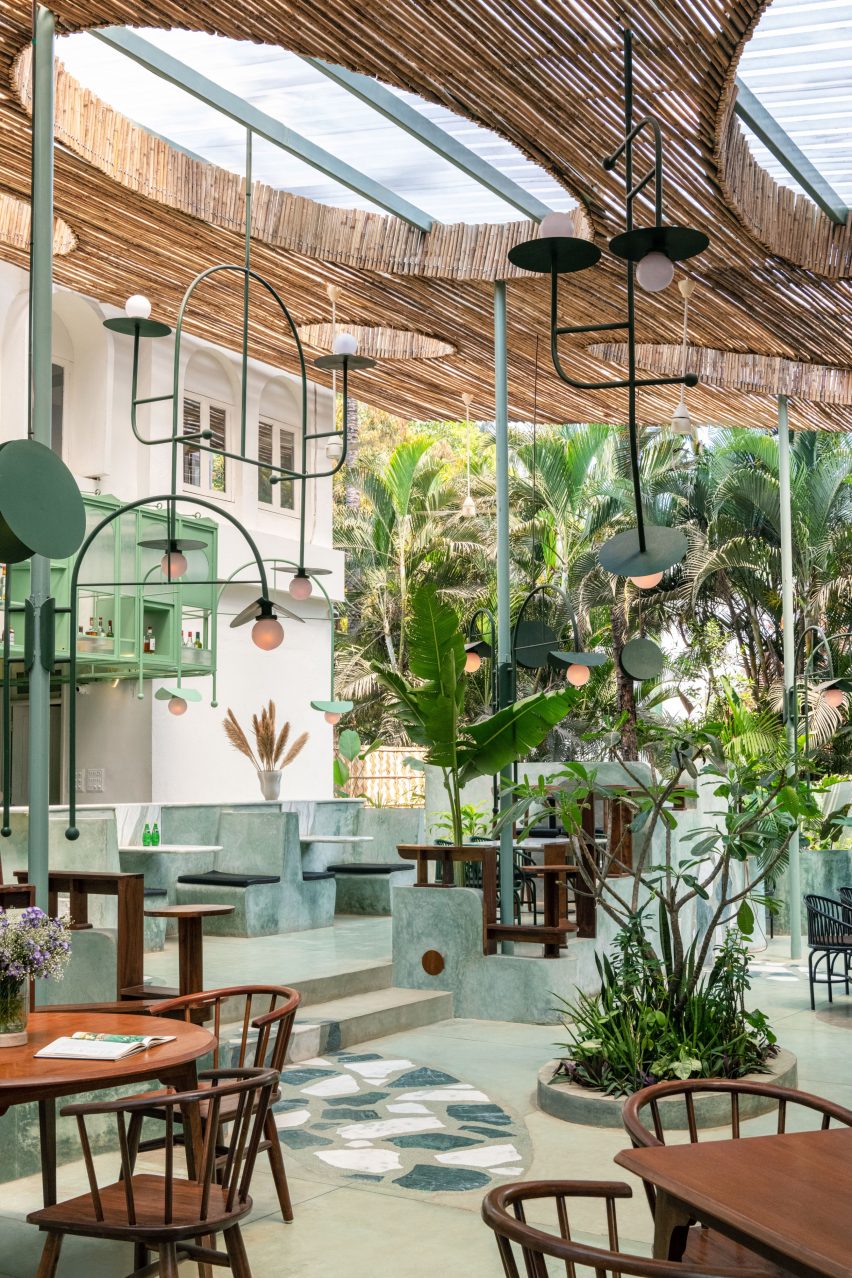
“The balcão is a crucial part of a Goan home as this is where one spends most of their time,” Otherworlds founder Arko told Dezeen.
“At a time of rampant urbanization, all houses tend to become very self-contained, private and detached, separated away from the city or the neighborhood,” he continued.
“The balcão becomes all the more important at such a time as it is built with the idea of reinforcing the kinship between the house and the neighborhood.”
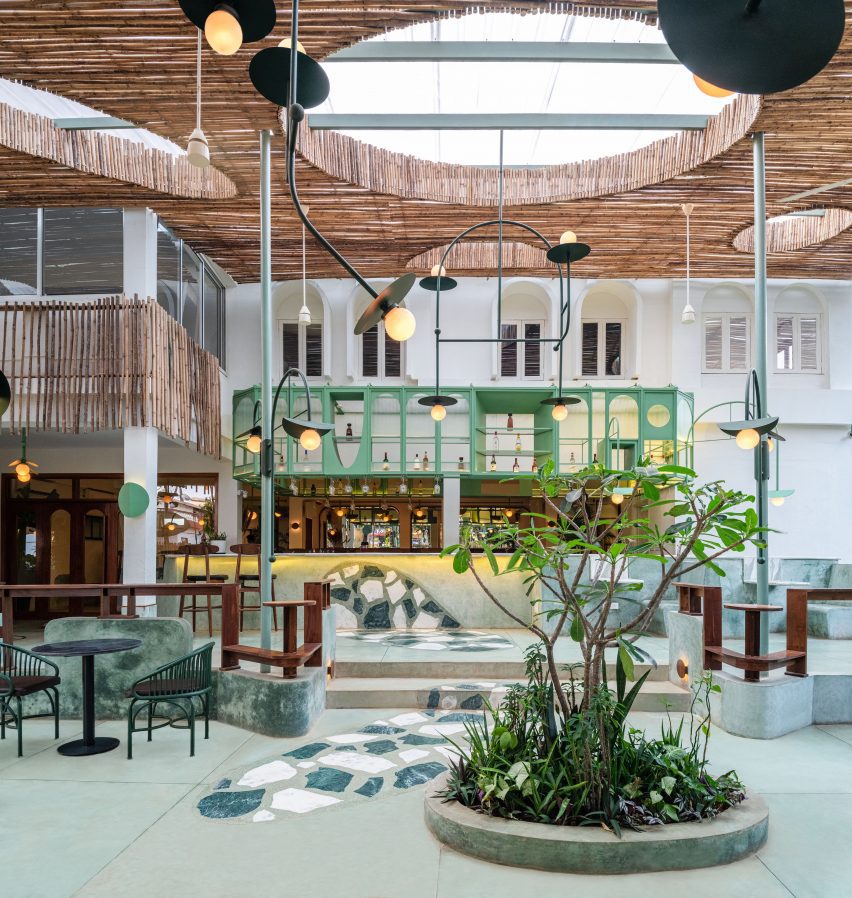
Multidisciplinary studio Otherworlds overhauled the villa, which it describes as a “formerly enclosed shell”, by removing some of the external walls and extending the dining area into an outdoor porch.
Moreover, This area is sheltered by a large bamboo canopy with elliptical openings. They diffuse the natural light, transforming the space throughout the day.
The canopy is intended to mitigate the region’s extreme weather conditions; sheltering customers from the rain. During monsoon season and providing a semi-open space with plenty of air circulation during the hot summer months.
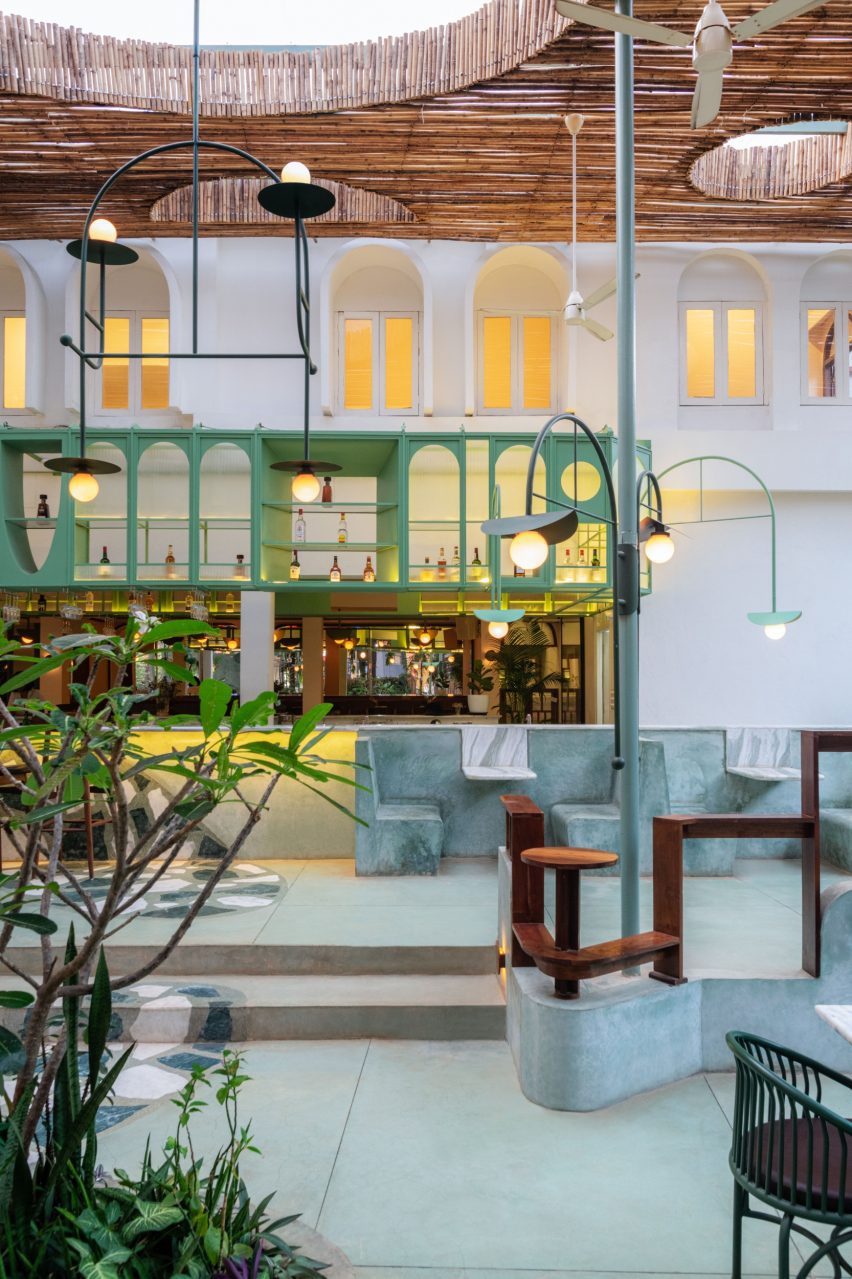
Otherworlds designed the bar so that customers face each other. Rather than facing the wall, in a bid to “encourage chance encounters”.
“The intention was to create an immersive atmospheric experience that inspires a feeling of being in a tropical. Lush outdoor space under an overgrown natural canopy,” said Arko.
A metal and fluted glass structure hung from the building’s external walls floats above the white marble bartop. And holds the arc-shaped lamps that light the intimate two-seater booths flanking the bar.
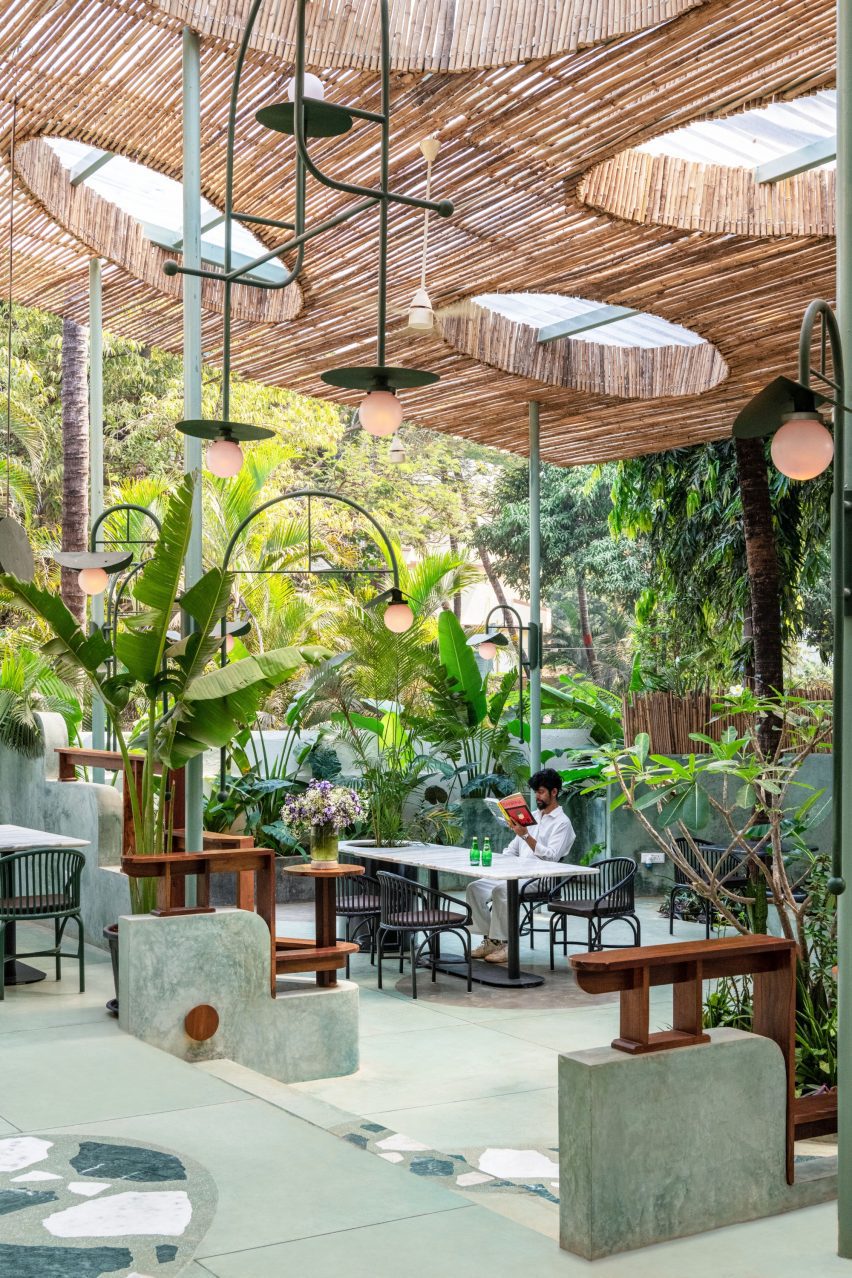
At night, the restaurant is lit by low-hung sinuous lamps informed by sweeping stems that are intended to add a sense of “whimsy” to the interior.
Furthermore, Adhering to Terttulia’s signature green and white color scheme, the studio opted for a palette of locally sourced materials. Including the green-pigmented hand-cast concrete that it used to create the restaurant’s flooring.
“The green pigmented hand-cast concrete floor, largely termed as IPS [Indian Patent stone], is found in most places in the country and is also used to finish the balcão in all Goan homes,” Arko explained.
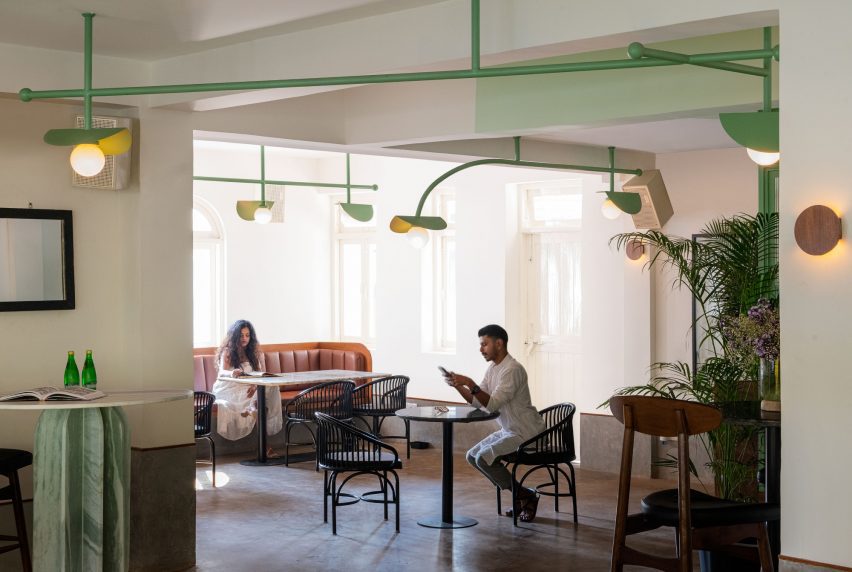
Otherworlds worked with Jyamiti & Sea to create ovoid terrazzo accents that are in places across the floor and walls.
Furthermore, The studio achieved what it terms “the perfect green”. Using a mixture of white and grey cement and green oxide pigment.
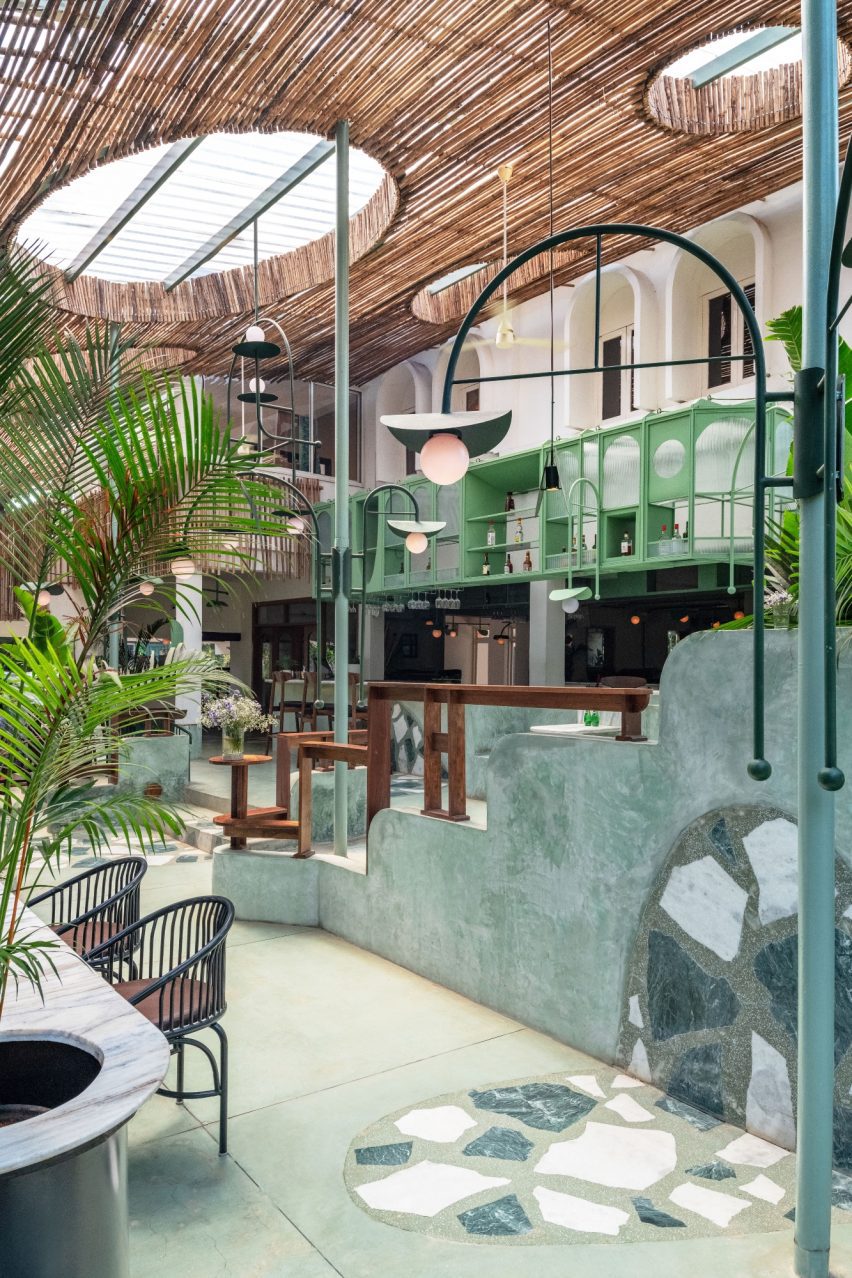
“The tricky bit with colored concrete is achieving the exact shade [because] once the cement sets and is polished, the result is quite different from the initial wet mix,” said Arko.
“The process required numerous iterations and experiments to get the right mixture of materials that would yield the correct shade.”
Moreover, green cement is by dark wood from the matti, Goa’s state tree.
“We imagined the restaurant to be an extension of the house and while being part of it, [we also wanted it to] feel like a part of the city.”


 العربية
العربية